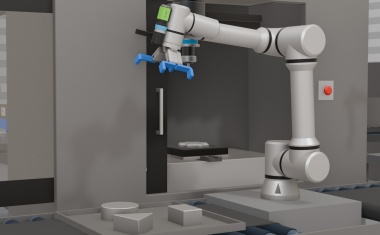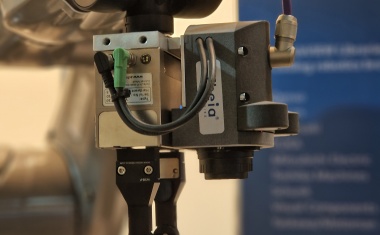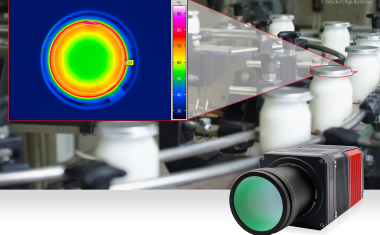On the Safe Side
Perfect timing: As Ethernet APL technology is being launched, users in the chemical industry are also eager to tackle the subject of safety. They’ve looked to the automotive industry, which has relied on the black-channel principle with Profisafe for many years.
The safety concepts of the process automation field have been employed reliably and safely for years, but no-one denies that the effort involved in implementing them – from planning to installation and maintenance to storage – is considerable. This is in no small part due to the separate technology and infrastructure for process control (fieldbus) and safety applications (4–20 mA) in each case. At the same time, these technologies are becoming unsuitable for modern automation solutions.
With the introduction of flexible Ethernet APL technology, a standardized technical foundation for both safety and non-safety systems alike is now available. Precisely because the topic of Ethernet APL with Profinet as an industrial Ethernet protocol is being discussed at many companies, the time is right to develop a viable solution for safety applications. “We’re not looking for special solutions. Profisafe is a TÜV-tested SIL3 safety protocol which has proven itself in the automotive industry for many years, which is why this path was obvious to us,” explained Gerd Niedermayer, Senior E&I Engineering Manager at BASF. Typical requirements of the process industry for safety applications are considered there, such as:
- Fulfillment of current requirements as per IEC 61784-3 (industrial communication networks).
- Response times sufficient for the process, even with additional acyclic data exchange.
- Consistent data volumes sufficient for controlling and querying actuators and sensors.
“A large number of new Ethernet APL devices are currently in development. They can now be designed in such a way that the Profisafe stack can simply be activated later on, if necessary,” continued Niedermayer. Agreement on standardized safety communication for Ethernet APL use offers advantages to every component manufacturer and plant owner involved. Manufacturers of sensors, actuators and controllers need only implement, certify and maintain a protocol. The only thing owners and integrators need to provide is commissioning and maintenance expertise in infrastructure and a family of protocols.
Advantages in Practice
The foundation of a comprehensive automation concept is being laid with a new standard device which is suitable for both operational automation and safety applications. The variety of devices and technologies within a production plant is being reduced considerably as well. Diagnostics and maintenance information are available precisely where they can achieve the greatest savings at a plant: PLT safety equipment.
There are other advantages, too, however, such as sensors which are only used in a safety function after some time. This is because new HAZOP studies are being carried out all the time over the course of the life cycle of a plant. Consequently, operating measuring points are being repurposed as safety measurement points. Now, they are being reverted from a digital communication medium back to analog technology. “This means that field devices, the wiring level and automation systems have to be completely swapped out,” explained Niedermayer. “If the measuring device has a Profisafe stack, there wouldn’t be any need for a laborious hardware conversion – only the Profisafe software would have to be activated.”
It’s generally the case that maintenance, acquisition and storage are simplified considerably over the entire life cycle with standardized field devices suitable for non-safety and safety applications.
Increased Measurement Precision
The common modulation of a HART signal up to the 4–20 mA signal certainly offers (non-safety) access to additional parameters and enables improved maintenance concepts, but it also results in poorer measurement precision. As the measured process values in the field devices are already available in digital form, they can be transferred directly to the automation systems with Ethernet APL with no loss in quality. “Now we don’t have to work with a value of 74 degrees, because it’s been converted two or three times, but instead get the precise value of 73.89 degrees,” said Niedermayer in pointing out another advantage. This more precise measured value isn’t just interesting from the standpoint of better process control – it’s also available for increased safety requirements.
Optimized Diagnostics
“We get improved diagnostic options thanks to standardized infrastructure for safety and non-safety applications,” said Niedermayer with satisfaction. Ultimately, companies have the opportunity to implement the same diagnostic concept for field devices, network technology and automation systems. In the case of pure 4–20 mA signals currently used in safety applications, diagnostic information can only be conveyed by way of a failure signal. This triggers the safety function channel in question. With Ethernet APL, however, differentiated evaluation and responses to alarms with no loss of measurement values would be possible. Niedermayer pointed out that testing expenditure is also reduced with Ethernet APL, as the devices can be checked regularly and comprehensively while the plant is running: “This is primarily of interest because the number of safety-related devices is constantly increasing.”
Market Acceptance
Blanket use of Ethernet APL field devices in both operational and safety applications requires the availability of common measurement principles with this technology as well. This includes pressure, temperature, fill level and flow rate, among other things. To justify investment in Ethernet APL infrastructure, at least 80 to 90 percent of the field devices of a plant must be integrated via Ethernet APL. Moreover, all components must be developed and certified as per IEC 61508 in order to be used in a safety application.
Although safety and non-safety protocols can be used in mixed operation, it’s important to users to keep the networks separate. “Despite relying on two separate networks for reasons of increased safety, we still want the same structure for the control system and safety PLC,” explained Niedermayer.
Conclusion: Ethernet APL Has the Potential to Simplify Safety and Non-Safety Applications
A few unanswered questions certainly still remain, but the initial experience with Profisafe at the BASF test plant – where Ethernet APL has been put through its paces for several years – are positive: “In August 2020, we connected two Profinet devices from Endress+Hauser with a Profisafe stack to our HIMax system from Hima in our test plant and subjected them to testing there. This worked well as a proof of concept,” said Niedermayer of his first impressions. Now, the name of the game is patience. “As the Profisafe function still has to be implemented in the Profinet field devices, we’re still awaiting roadmaps from manufacturers like Endress+Hauser, Krohne, Emerson and others,” said Niedermayer with confidence. Comprehensive digitization required by Namur can also be easily implemented with this technology.
In any case, Ethernet APL has the potential to simplify safety and non-safety applications, in Niedermayer’s view. The advantage here would be that process automation solutions which link minimal complexity with maximum efficiency would be created. “If this solution concept is used as an industrial standard in process automation, we’d also have full data transparency in the plant at the same time. This opens further opportunities for optimization,” concluded Niedermayer.
Author
Sabine Mühlenkamp for PI











